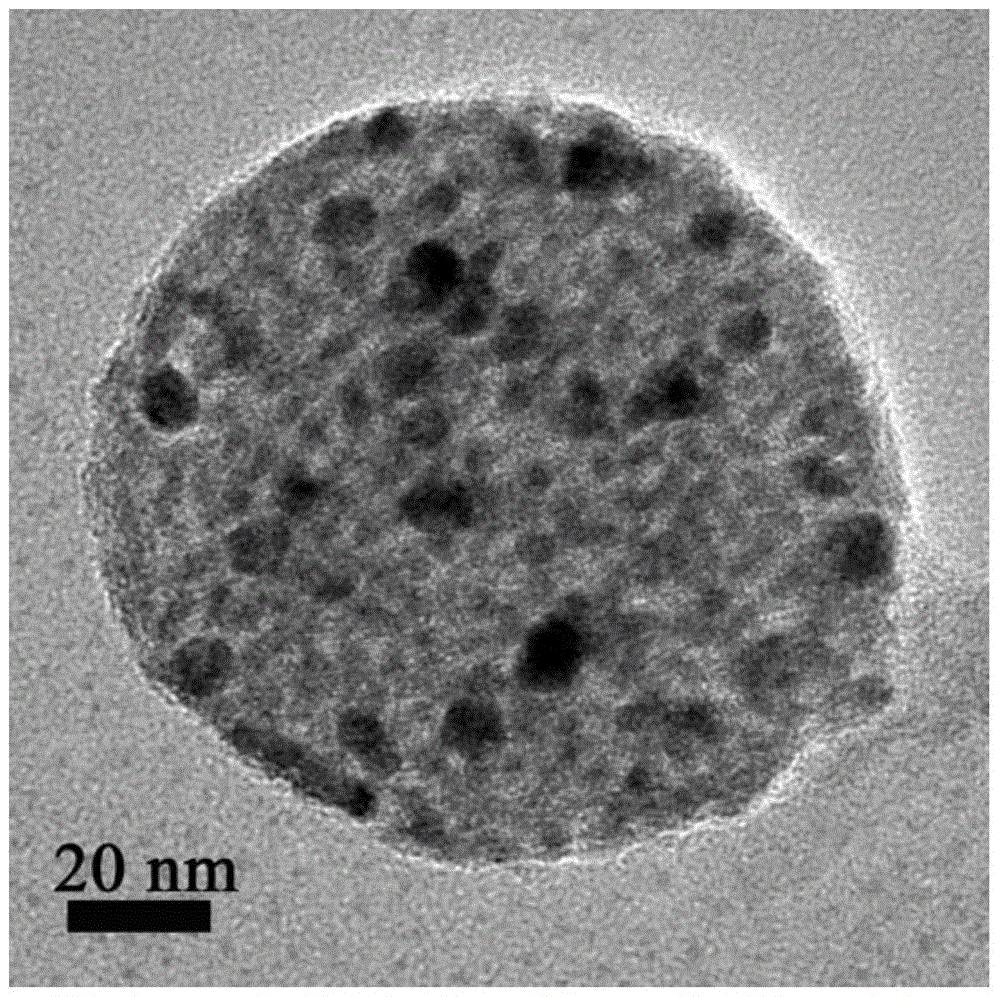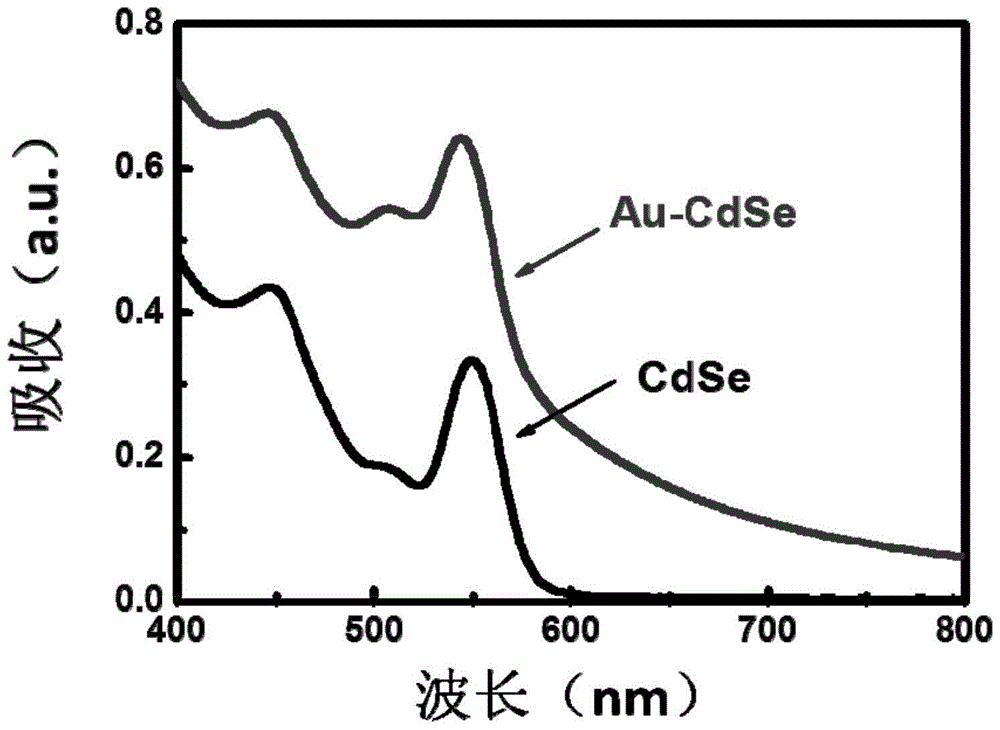A nanocluster that efficiently utilizes the surface plasmon resonance effect and its preparation method and application
A technology of surface plasmon and resonance effect, which is applied in the direction of nanotechnology, nanotechnology, nanotechnology, etc. for materials and surface science, can solve the problems that limit the wide application of surface plasmon resonance effect, and achieve good photocatalytic decomposition of aquatic products. The effects of hydrogen performance, controllable composition, and mild conditions of the preparation method
- Summary
- Abstract
- Description
- Claims
- Application Information
AI Technical Summary
Problems solved by technology
Method used
Image
Examples
Embodiment 1
[0035] A method for preparing a nanocluster efficiently utilizing the surface plasmon resonance effect, comprising the following steps:
[0036] At room temperature, 1ml of cyclohexane dispersed with 9nm Au nanocrystals and 3nm CdSe nanocrystals was mixed with 10ml of sodium dodecyl sulfate (SDS) aqueous solution to form a microemulsion under ultrasonic conditions. The ultrasonic power was 20% for 5 minutes. Wherein, the concentration of CdSe in the cyclohexane dispersion is 5 mg / ml, the concentration of Au in the cyclohexane dispersion is 1 mg / ml, and the concentration of sodium lauryl sulfate in the aqueous solution is 3 mg / ml.
[0037] The microemulsion was heated at 343K for 4h, separated and dried to obtain Au / CdSe nanoclusters.
[0038] The prepared Au / CdSe nanoclusters were characterized by transmission electron microscopy, figure 1 For the obtained electron micrograph of Au / CdSe nanoclusters, it can be seen that Au / CdSe nanoclusters are composed of Au nanocrystals and...
Embodiment 2
[0045] Repeat Example 1, the only difference is that the solubility of 9nm Au nanocrystals is 0.5 mg / ml, and Au / CdSe nanoclusters can still be obtained.
Embodiment 3
[0047] Repeat Example 1, the only difference is that the solubility of 9nm Au nanocrystals is 1.5 mg / ml, and Au / CdSe nanoclusters can still be obtained.
PUM
| Property | Measurement | Unit |
|---|---|---|
| particle diameter | aaaaa | aaaaa |
| diameter | aaaaa | aaaaa |
| particle diameter | aaaaa | aaaaa |
Abstract
Description
Claims
Application Information
 Login to View More
Login to View More - Generate Ideas
- Intellectual Property
- Life Sciences
- Materials
- Tech Scout
- Unparalleled Data Quality
- Higher Quality Content
- 60% Fewer Hallucinations
Browse by: Latest US Patents, China's latest patents, Technical Efficacy Thesaurus, Application Domain, Technology Topic, Popular Technical Reports.
© 2025 PatSnap. All rights reserved.Legal|Privacy policy|Modern Slavery Act Transparency Statement|Sitemap|About US| Contact US: help@patsnap.com



